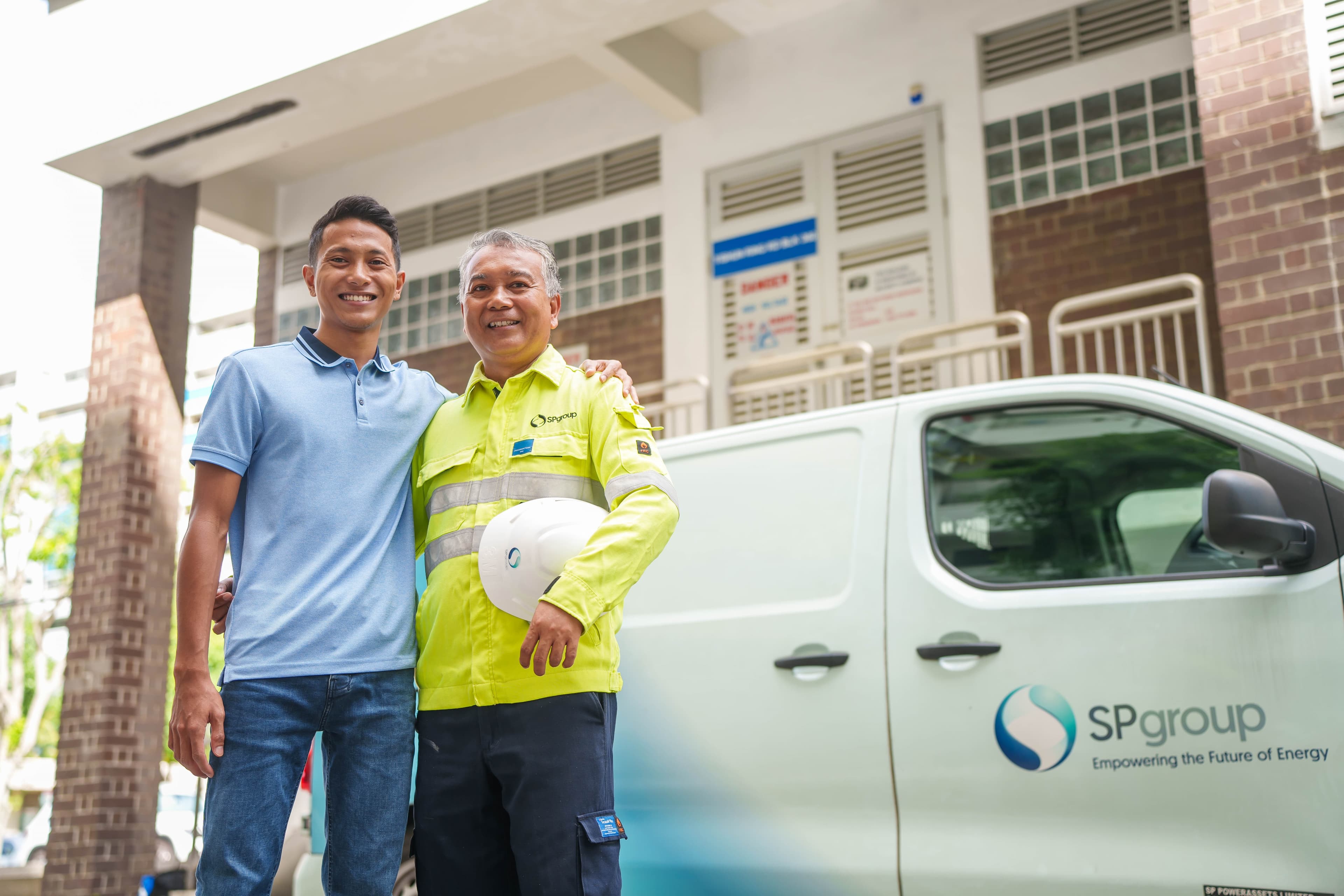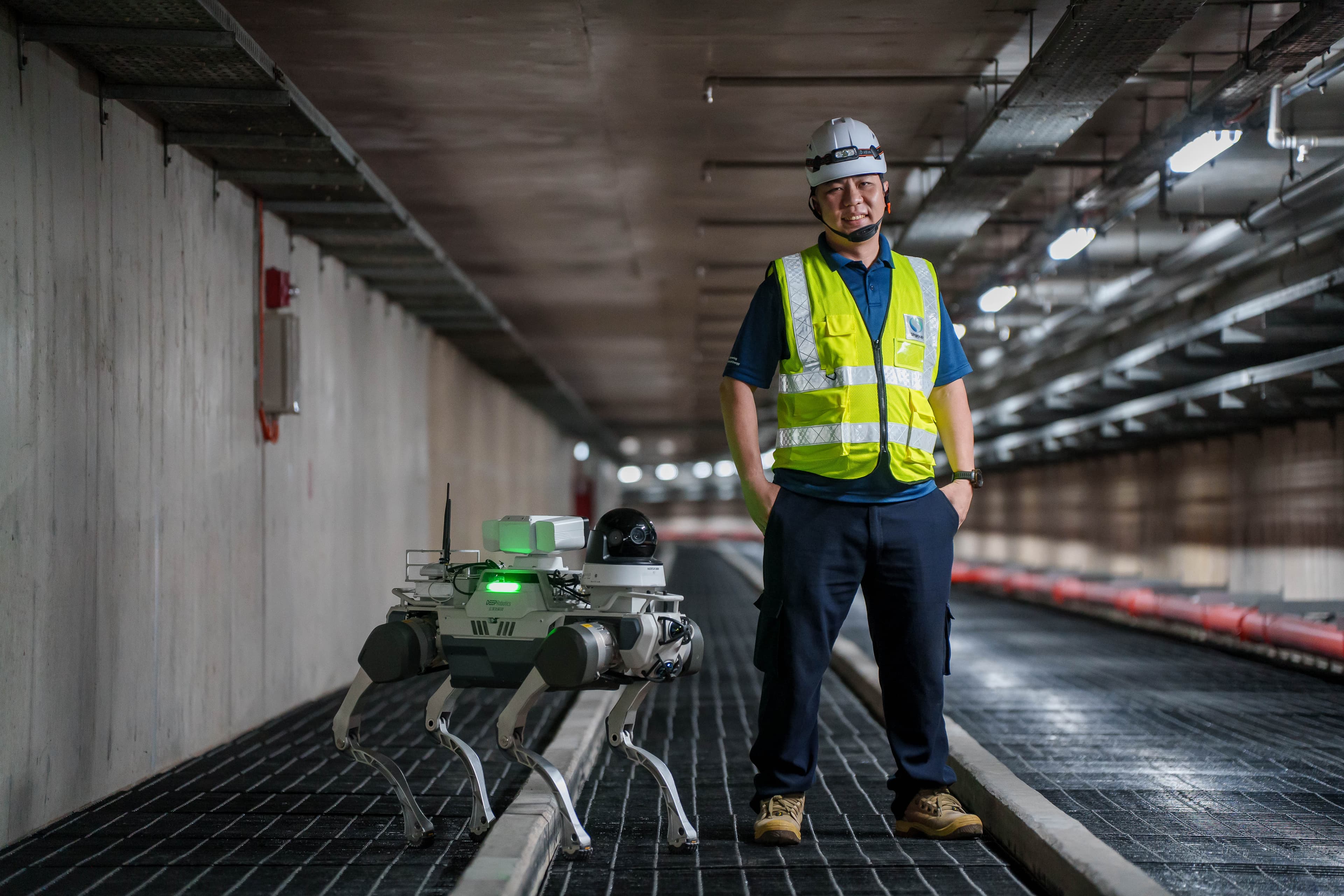Mobile Generators: Powering Continuity

When an electrical glitch hit Kian Teck Avenue in Jurong last month, a team from SP Group’s Mobile Generator Unit was charged and ready to roll. In minutes, a mobile generator mounted on a 30-ft trailer left a facility in Pasir Panjang for the site of the incident.
The generator carried some 2,000 litres of diesel, enough to power up a housing estate for around eight hours, and up to 40 metres of cable to hook up to a low-voltage (LV) board, which distributes electricity.
“We need to always be prepared to provide temporary power,” says Mr Mohamed Nasir bin Mohamed Ismail, 42, a technical officer who is part of the unit.
Readiness is key for the Mobile Generator Unit. This begins at 7.30am with a daily “warm up”, conducted by the 10 men on the morning shift.
During the one-hour ritual, all the operational mobile generators – the larger ones mounted on fourteen 30-ft trailers, and the smaller ones on seven 20-ft lorries – are started and tested to ensure they are ready to be deployed. The team members also conduct cable insulation tests and checks on their toolboxes and personal protection gear.
This enables them to act swiftly and safely, in the event of an electricity disruption.
The men, who work on three shifts round the clock, are deployed by SP Group’s Electricity Service Centre in teams of three – a leader, an assistant, and a driver.
Mr Nasir, the leader of his team, has been with SP for 21 years, joining right after he completed his National Service in 1998. He studied mechanical engineering at the ITE and plays the role of synchroniser, ensuring that the voltage and frequency of the mobile generator matches that of the grid network.
Mr Nasir, who has both a Class 4 and Class 5 driving license, doubles up as a driver, and says navigating these massive vehicles is an exercise that requires both practice and courage.
The trailer-mounted mobile generators cannot travel through tunnels, including those on expressways like the MCE, CTE or KPE. The 60km/h speed limit also keeps them in the slowest lanes most of the time. The trailer-mounted generators are part of a fleet of 22 vehicles of different sizes and capacities used for power restoration.
“You need to know the quickest alternative route around traffic or restrictions. Outage in Ang Mo Kio and leaving from Pasir Panjang? Alexandra, Farrer, Adam, Braddell, then join the CTE after the tunnel,” Mr Nasir rattles off.
The narrow roads in some estates and parked vehicles can also pose problems for the 13 metres by 2.6 metres by 4.3 metres trailers, and it is up to the two men with the driver to recce for a spot to hunker down – which must also be close enough to an electrical room to hook up.
While Singapore enjoys one of the lowest occurrences of outages in the world, it is gratifying to be a part of a team that helps “get the lights back on" if supply is disrupted, Mr Nasir says.
“We are usually greeted by frustrated faces when we arrive, so seeing them happy again makes us very happy,” he quipped.
— 1 May 2019







